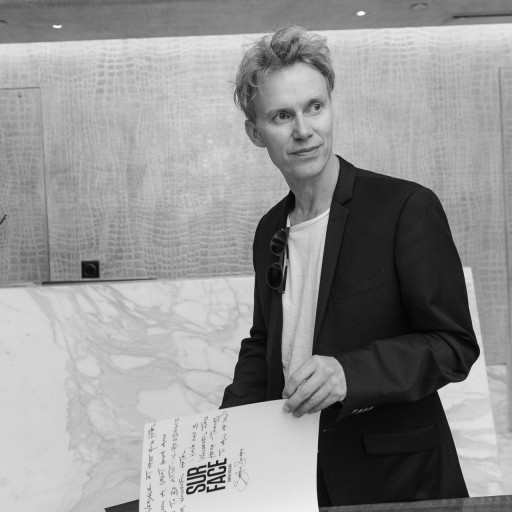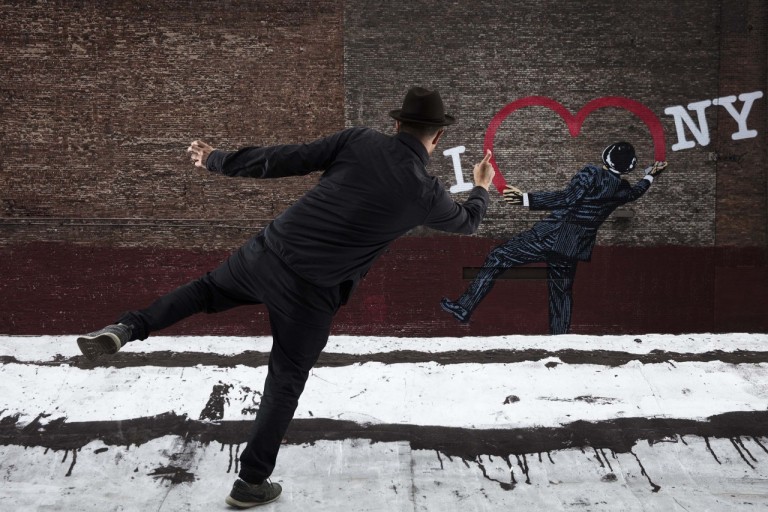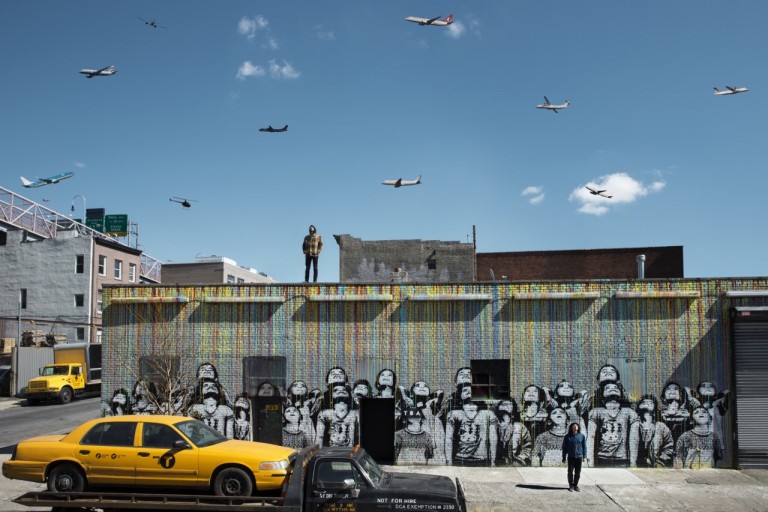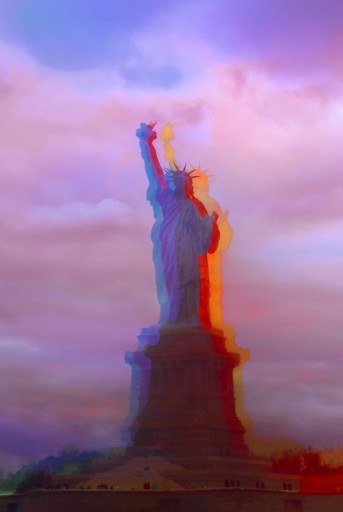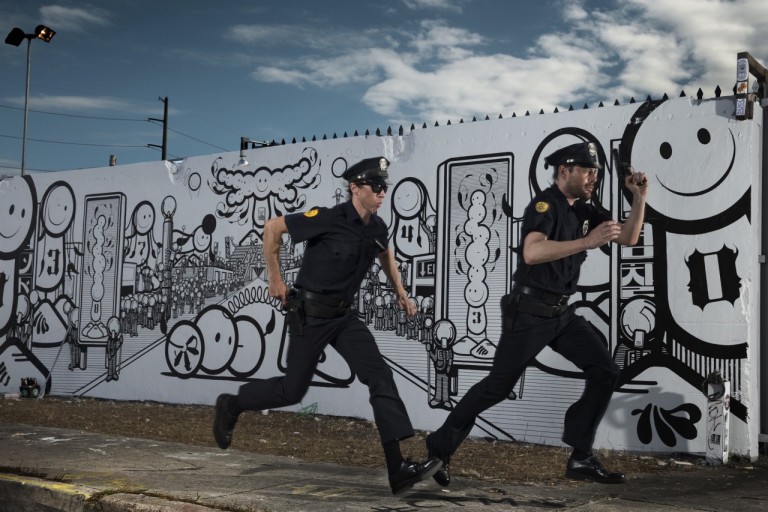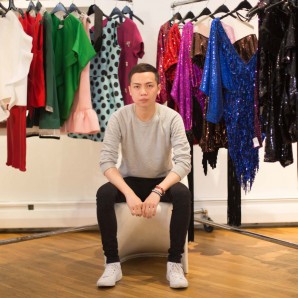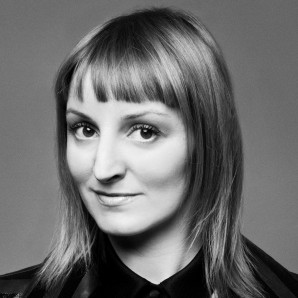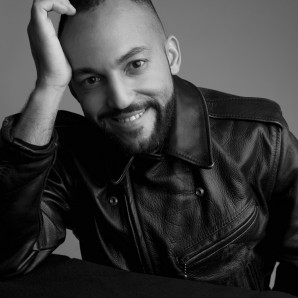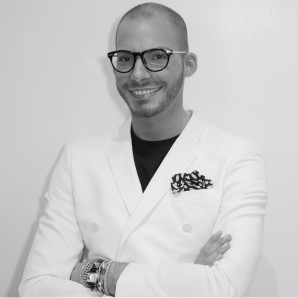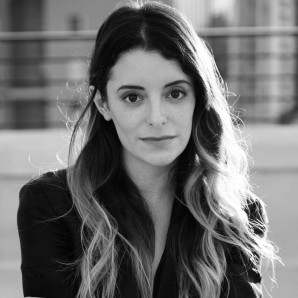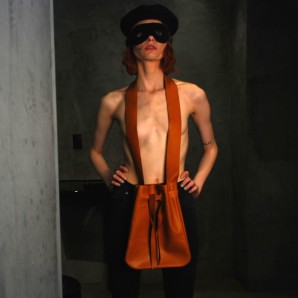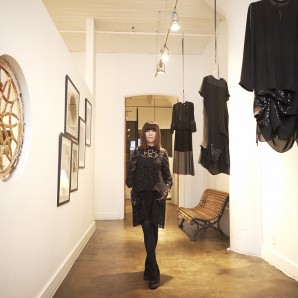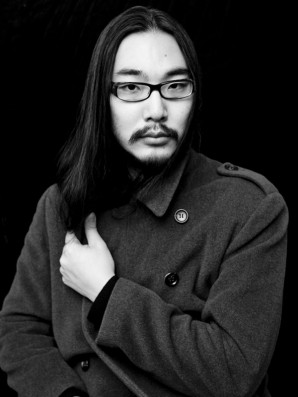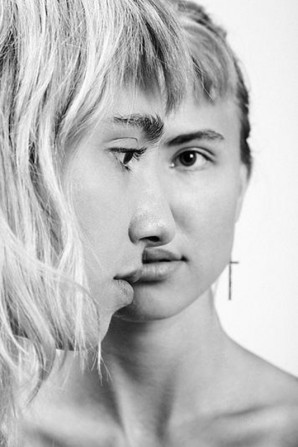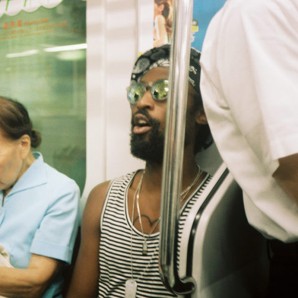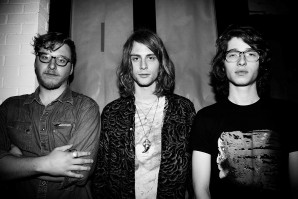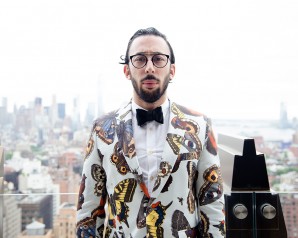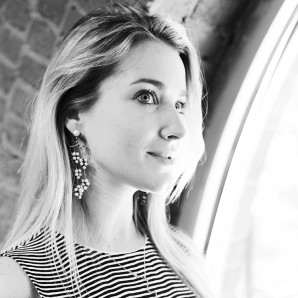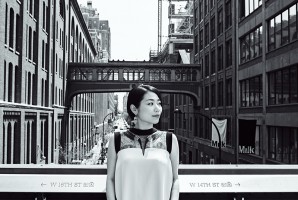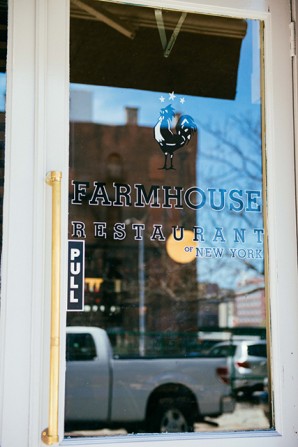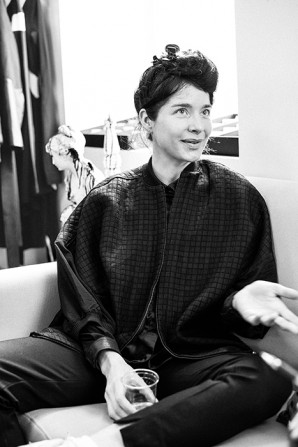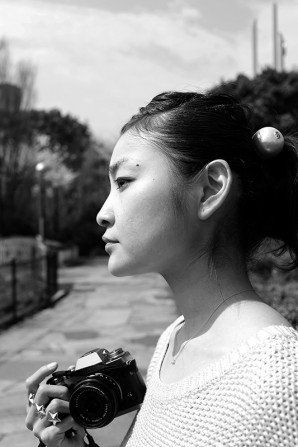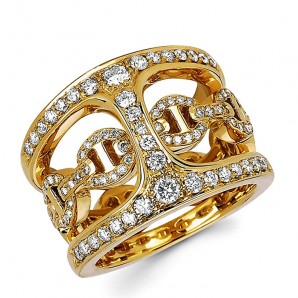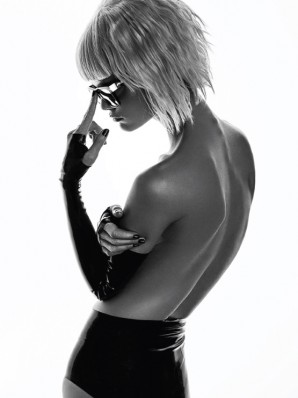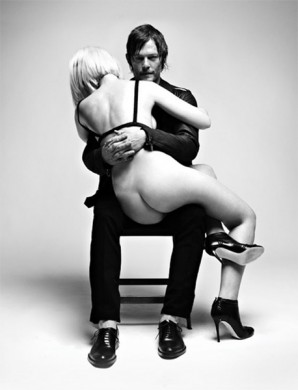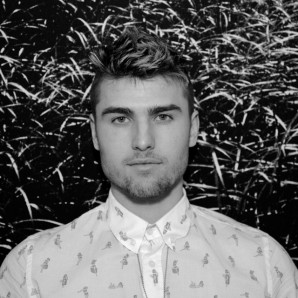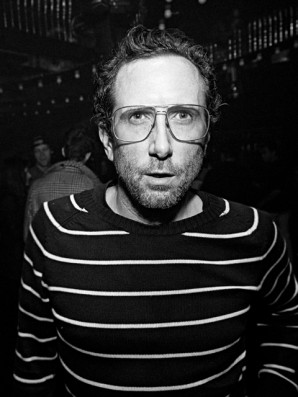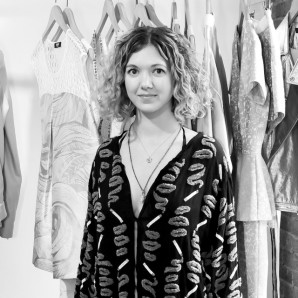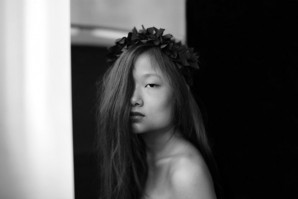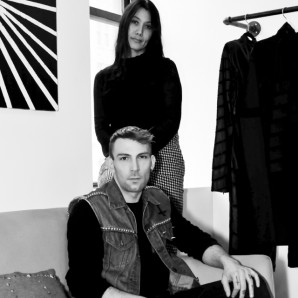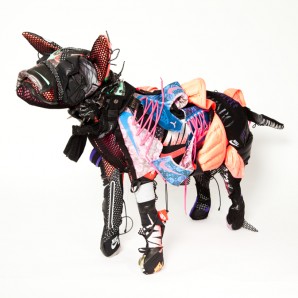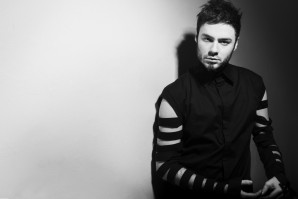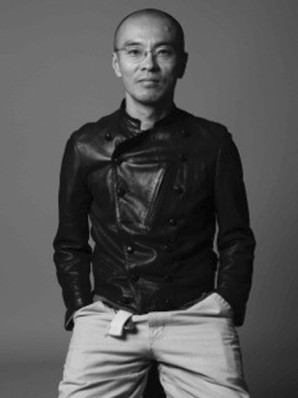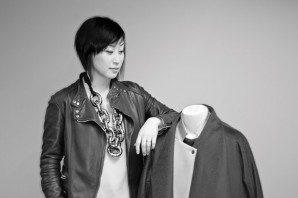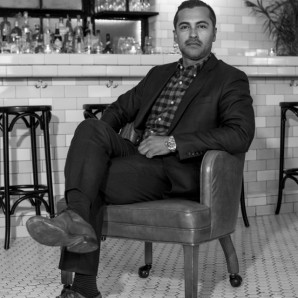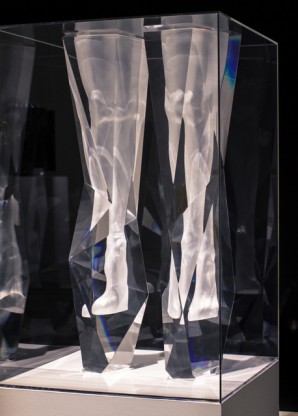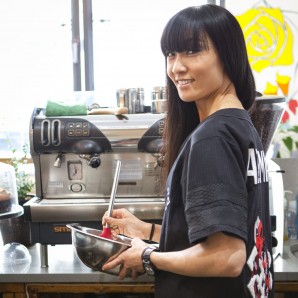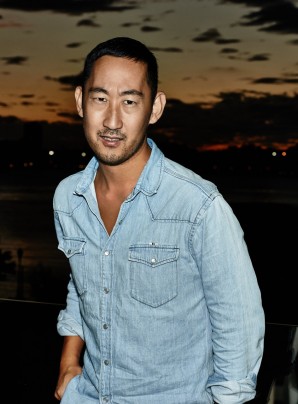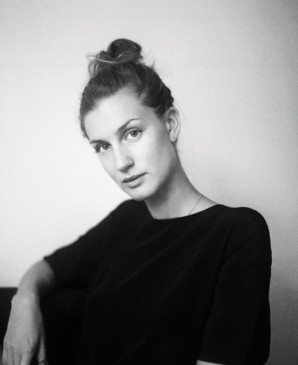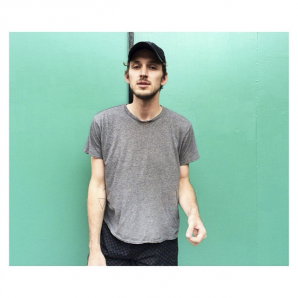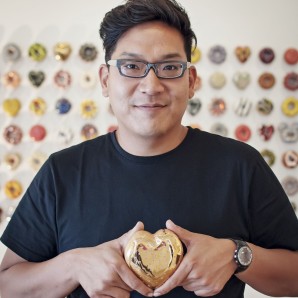"Cheng-Huai Chuang was introduced to fashion at a young age"
Søren Solkær Interview
Stepping out of a cab into the urban symphony of Midtown, the entryway to The Quin Hotel was easy to spot— with classic architecture and bright satin flags swaying slowly in the summer breeze. There was a new exhibit on display called Heartbeat City, featuring photographs of the most recognizable symbols of New York, all with a distinct tone and colorful whimsy. Reminiscent of the iconic screen prints of the 60s, the modern, elegant lobby of The Quin had been transformed into a setting of cosmopolitan celebration. After exploring the lobby display and all of the other art locations throughout the hotel, I was escorted to interview Søren Solkær, the artist behind the dynamic photographs.
Audrey Rose at TWELV: Can you tell me a little more about your exhibit Heartbeat City?
Søren Solkær: Heartbeat City is the title for the whole lobby installation, but it’s mainly inspired by my new work. “Beat City” was the name of the first music video I ever did with The Ravenettes, and part of it was shot in New York. So it goes back to the late 90s or early 2000s. And the “Heart” part came from my love for New York. I’ve come back here maybe forty or fifty times. This image that I did of Nick Walker (also when I came to The Quin for the first time) had the very iconic heart in it, too.
A: What were your main sources of inspiration for the project?
SS: All of the work is done in New York City– whether its a photograph taken from an airplane, one of street artists or some of the most iconic spots in New York, or shots from the 90s. All the photographs are New York, as seen by me, across many projects and during quite a long period of time.
A: What keeps drawing you back to New York?
SS: I’m here a few times every year, and I know the city really well. Not quite like a local, but almost. I’m here that often. I’ve shot a lot in the streets, so I know a lot of the buildings and corners and the different neighborhoods. There’s just nothing like it. If I haven’t visited for 6 months, I find a reason to come back.
A: How have you experienced New York change since you first started coming here?
SS: It’s a good question, because it’s one that I can’t answer very well. I think I’ve changed a lot in the same period. When I started coming here, I was sleeping on friends’ couches. But I’ve always been mainly interested in the art and the street life, and I don’t really know how it’s changed– it’s just always been exciting! It’s always been this unlimited source of inspiration for me.
A: You originally started working as a photographer with Danish rock bands in the 90s. How was that experience?
SS: I started with Danish bands, but after a couple years of photographing in Copenhagen, I started working with English bands. It doesn’t take a long time to get acquainted with all the bands in Copenhagen– it’s a small place– so once I ran out of new exciting bands, I started working in London.
A: And that was when you transitioned from photographing mainly musicians to working more with artists and shooting street photography?
SS: Yes, but I’ve always worked with artists. Before I shot musicians, I did a project where I just photographed photographers. And in this work I photographed forty-five photographers. I’ve always been interested in working with other creatives, whether it be visual artists or actors or musicians.
— D.K. Johnston, the art curator at The Quin, joins the conversation. He sits across from Soren on the couch. After we all take a little break for small talk, we resume the interview.
A: Søren, what is it about The Quin that attracted your attention as an artist? What made this the perfect place to exhibit your work?
SS: It was a place that I started hearing about last year. I had never stayed here in the past, but some friends of mine showed here. I learned about the art program and that The Quin has a special relationship with artists. And then one day, Darren [D.K. Johnston] called me, and that’s really how it all started.
A: Did you have a say in where you wanted your art to be showcased within the hotel? Or was that more of the curator’s expertise?
D.K. Johnston: My hope is to have more and more different fingerprints on the visual process and the experience for the guests, so for someone with the aesthetic and design vision that Soren has, it was really mostly his own perspective on where to place things. We shared the history of different experiments that we’ve tried at the hotel– now that we’re almost to 20 of these solo shows– so it was a good base to work off of layout-wise, too.
SS: Yes, I had a pretty different plan when I arrived the first time, so actually it was something that developed over time, which made it really custom-made for the space. And the opportunity came up to show some work in the penthouse, and suddenly the hotel opened up even more, which was great.
A: You cite pop art as a source of influence for Heartbeat City, and we’ve seen pop art in its purest form shift towards something that’s more mass produced and used across immense media platforms. What are your thoughts on this evolution?
SS: I suppose it was pretty shocking when Andy Warhol did it, because he was using commercial printing techniques to create art– and that was shocking. But now I think it’s been absorbed, especially by street artists. Almost every other street artist has a studio practice as well, so these print-making techniques have really become part of it. Of course you can see Warhol’s fingerprints all over today’s art world even though it was many decades ago that he started doing it. I had a few different ideas for this new project about New York, but I ended up not going the printing way. Instead I did these multiple exposures that had been inspired by pop art prints, but using my camera.
DK: When I start to hear pop art tossed around in a dialogue on street art, my aspirations lean towards tying the two movements together. A lot of street artists have the same challenges that pop artists faced in the 60s, 70s and 80s– challenges of defining a movement. I tend to find that the same players in the movement have little to do with each other as artists, other than that they were alive at the same time. And street art struggles with that same kind of loose connectivity. There is a vast amount of nuance. This art is all collected and sold by the same group of people and followed by the same group of admirers. And pop art had this too, and it took a long time to formulate a valuable market around it. I think in street art, you have a movement that was born out of graffiti, and you have writers on that side like TAKI 183 or Cornbread who really have no commercial viability, but every person in the graffiti industry has to tip their cap to them for opening up the door. And I think that Soren has helped memorialize a lot of these artists.
A: Do you see politics as a major driving force in the street art community?
SS: They are driven by many many different things. Some are more aesthetics. Some are more political. Some are ego-driven. There are some artists that if you go into a certain kind of bar, be it in Prague, London, New York, you know you’ll find their stickers in the toilet. Say with Shepard Fairey and Obey, his stickers are found everywhere.
DK: And a lot of that is his tribe. His admirers buy his stickers and they’re proliferating his ideas. It’s pretty interesting. I’ve been working with all these artists and representing them for many years, and Soren has photographed many of them. This continuity and now being able to share the backstories and evolution has been a lot of fun. But the hope of trying to memorialize what’s going on here has been a real challenge, and Soren took on that challenge over a long period of time and did such a thoughtful job of telling their stories and capturing their work and the importance of it– I think it’s a cornerstone for the movement.
A: As an artist, what kind of impression do you want to make on people when they see your work?
SS: When we first talked about what I would show here, it wasn’t going to be work based on New York. It would be bringing another part of the world to this hotel to show what it’s like there. But, I felt like it made more sense to showcase New York because people staying at this hotel are from everywhere in the world. And at least while we’re all staying here, this is what we have in common. I wanted to offer my view and love for the city. That’s what I wanted to share.
DK: When we got started, we wanted to focus on celebrating the art heritage here. I compare it to the difference between hanging up taxidermy trophies and actually wanting to live with animals. You can hang cool art on the walls, but if you really want to feel like the creative class is here, then they have to be here. It’s a delicate balance. We really wanted to live with giraffes and rhinos and art in its natural habitat, and we’ve done it. The artists that work with The Quin interact with the guests and are involved in a lot of the events. That’s a level of authenticity that you don’t often see.
A: Both street artists and musicians often have reputations for their somewhat volatile personalities. How has your experience been working in such close collaboration with them?
SS: After having worked with musicians for so many years, I eventually worked with most of the ones I wanted to work with. And I also found that it was getting harder and harder to express myself in music photography, because there was more and more control. The higher you get, the more restrictive it is. Suddenly, there would be people at shows making sure you were where you were supposed to be and that just doesn’t interest me. The reason I started doing music photography was because I thought I had a lot of creative freedom there, but I felt like it had become very commercialized and controlled. During those years, street art started popping up everywhere. I started seeing all these great murals going up, and I started recognizing the work and recognizing the names, but I would know nothing about the artist. It’s so different from other art forms, because you don’t know what the artist looks like– you don’t know them. So I felt like this was the new place where the rock n’ roll types would go and express themselves. And I was right. The street artists are twenty times more rock n’ roll than the rockstars.
A: Was it challenging to transition into the street art world?
SS: In street art, at first, no one knew who I was. Basically I wanted to get back to creative freedom and creative collaboration. And that’s whats been really wonderful about this project. I’ve gotten to work with some amazing people with great ideas and crazy energy. And they’re up for anything. The second artists I shot for this project was like, “No, my face can’t be in there!” and I had never thought about that before. So, I had to find a new way of doing it, and the fact that so many street artists didn’t want their faces in the frame became a creative obstacle. But it made this project more interesting.
A: So you went from music to the new rock n’ roll, which you feel is street art. What do you think will be the new new rock n’ roll?
SS: Probably the not-so-established street artists. Things change when you get established, but I think the difference between going into a rehearsal with three guys and doing illegal work at night on a roof, risking your life and your freedom, to tell the world your name or about your dreams– I think it’s a much wilder thing to do than get a hit on the radio.
A: How do you think this style of photography, capturing street artists, will change in the future?
SS: I’ve done almost all of the shoots out on my own, just me and the artist, with maybe my girlfriend filming. And that was it. It was super simple. And it’s very likely that it won’t be possible to do that in 5 years. An army of photographers want to come up with the artists in the lift when they’re trying to finish the wall. Street artists are becoming stars, so it’s changing for sure. I think it’ll be harder to do what I’m working on in the future, but that’s the beauty of it, too. It happens in the streets. Anyone can go out and talk to the artist. And I think that’s pretty cool.
Edited for length and clarity.
WRITTEN BY AUDREY ROSE
EDITED BY HOLLIS DE LANEY
SPECIAL THANKS: BURNS PATTERSON AND THE QUIN HOTEL
PHOTO CREDIT: SØREN SOLKÆR
related posts
NEW TYPE #12: DROMe - MARIANNA ROSATI INTERVIEW
" I carry in my heart the values I've learned from my hometown - such as being true to myself and to my style"
IKEMEN #30: JORGE URENA
IKEMEN (ē´k´mɛn): Japanese Slang
"REALLY, REALLY, RIDICULOUSLY GOOD LOOKING PEOPLE"
NEW TYPE #11: LODOVICO ZORDANAZZO INTERVIEW
TWELV Magazine sat down with Lodovico Zordanazzo during his NYC visit to discuss his new collection and unique perspective on shoe design.
NEW TYPE #9: J.ELSTER - JENNIFER ELSTER Interview
TWELV Magazine recently visited filmmaker and designer, Jennifer Elster, at her studio, The Development.
NEW TYPE #8: MORGANE LE FAY - Liliana Casabal Interview
Noritaka Tatehana Exclusive Interview
The talented young Japanese designer, Noritaka Tatehana, who collaborated with Iris Van Herpen to design Lady Gaga’s shoes.
CHAOS CHAOS Interview
Formerly known as Smoosh, Asy and Chloe Saavedra of Chaos Chaos have always been a sister-sister duo.
THE KNOCKS Takes Tokyo
Recently, electro-pop duo, The Knocks, visited Japan to perform in the ARC+TWELV party at ARC, a newly opened venue in Tokyo.
CAVERNS Interview
TWELV had privilage of chatting with our friends from the band Caverns. The trio hail from NYC and are pretty much all over the music scene here!
Michael Phillips Moskowitz, eBay Chief Curator & Ed. Director, Interview
TWELV Magazine had the pleasure of connecting with Michael Phillips Moskowitz, the Global Chief Curator & Editorial Director at eBay.
NEW TYPE #7: EKAT - Katya INTERVIEW
"Introducing a new generation of designers"
Mai Mukaida Interview
Makeup Artist / CEO, Lalitpur.
Believes in the power of cosmetic
and lives with women in Nepal.
M KOUGER INTERVIEW: Farmhouse
With the fabulous Chloe 81, the oysterrific Chloe 81 Blue Room and the recently opened Farmhouse Restaurant, M Kouger has established an essential trifecta of entertainment in NYC’...
NEW TYPE #6: BERENIK- Veronica Brusa INTERVIEW
"Introducing a new generation of designers"
REI SHITO INTERVIEW
Street Fashion Photographer
and Style Blogger.
Loves in Street and the Beyond
Interview: The Refined Opulence of Hoorsenbuhs
The Hoorsenbuhs name has become synonymous with exclusivity, craftsmanship, and opulence. Once nothing more than the ambitious brainchild of creator Robert Keith, the brand has become a staple in...
NEW TYPE #5: HAZE Collection INTERVIEW
"Introducing a new generation of designers"
IKEMEN #29: JAY XERO
IKEMEN (ē´k´mɛn): Japanese Slang
"REALLY, REALLY, RIDICULOUSLY GOOD LOOKING PEOPLE"
Travis Bass Interview
New York’s Greenwich Village is now home to a new and amazing club created by the ultimate party planner/Pop Up Club designer, Travis Bass, called ZAZOU.
NEW TYPE #4: SAUNDER - Emily Saunders interview
"Introducing a new generation of designers"
NEW TYPE #3: GLORIA YU interview
"Introducing a new generation of designers"
IKEMEN #28: CJ Swanton & Mariko Derpa
IKEMEN (ē´k´mɛn): Japanese Slang
"REALLY, REALLY, RIDICULOUSLY GOOD LOOKING PEOPLE"
NEW TYPE #2: VINTI ANDREWS - Vinti Tan and Paul Andrews INTERVIEW
"Introducing a new generation of designers"
NEW TYPE #1: DEJAN DESPOTOVIC INTERVIEW
"Introducing a new generation of designers"
BEHIND THE SCENES #3: KATSUYA KAMO
TWELV's Behind the Scenes takes a step back and visits the masterminds behind the camera.
SUK CHAI INTERVIEW "SCHAI"
“My hands and eyes ooze desire to create when I touch something special. When I touch the “right” fabric, I usually close my eyes and visualize all the things I can create.”
IKEMEN #27: M KOUGER
IKEMEN (ē´k´mɛn): Japanese Slang
"REALLY, REALLY, RIDICULOUSLY GOOD LOOKING PEOPLE"
NORITAKA TATEHANA EXCLUSIVE INTERVIEW
NORITAKA TATEHANA EXCLUSIVE INTERVIEW
IKEMEN #26: KANAMI KAWAGUCHI
IKEMEN (ē´k´mɛn): Japanese Slang
"REALLY, REALLY, RIDICULOUSLY GOOD LOOKING PEOPLE"
MAISON KITSUNé INTERVIEW
During their first ever showing in New York Fashion Week, TWELV Magazine and I got to catch up with the talented duo behind the remarkable brand, MAISON KITSUNÉ, We spoke with Gildas Loaëc and...
MARIA HEDMARK INTERVIEW
Although Swedish transplant MARIA HEDMARK has only been in New York City for three years, her line, LINIE NYC, takes its name straight from the city that never sleeps.
IKEMEN #25: LANDON MILLER
IKEMEN (ē´k´mɛn): Japanese Slang
"REALLY, REALLY, RIDICULOUSLY GOOD LOOKING PEOPLE"

